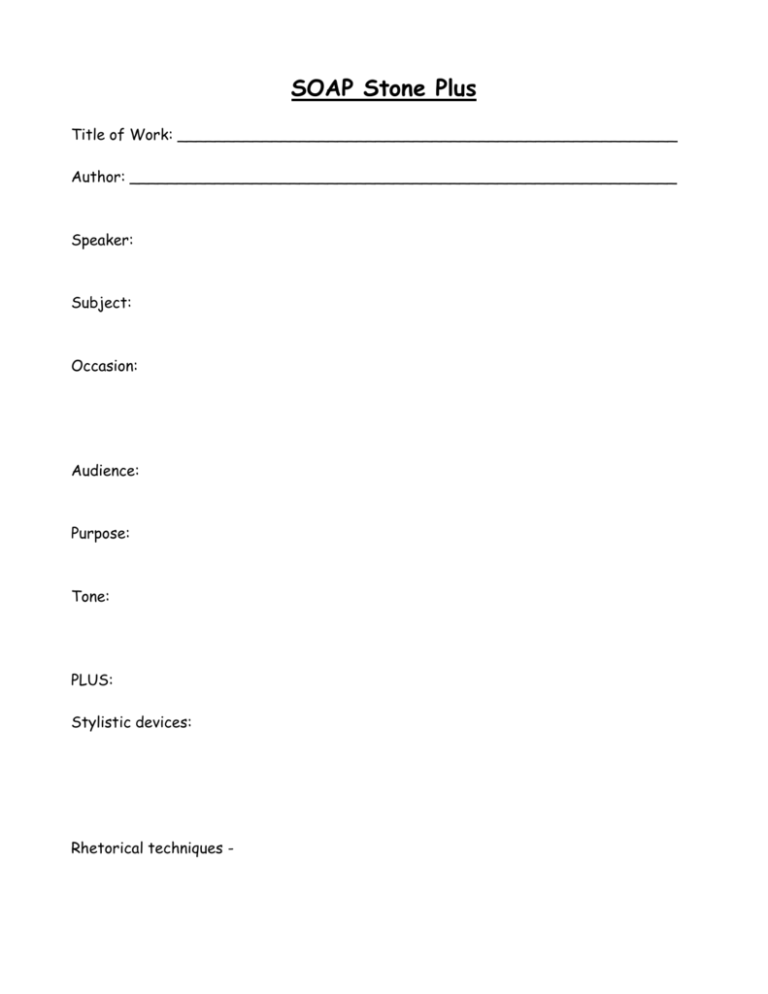SOAP STone Pre AP.doc
advertisement

SOAP Stone Plus Title of Work: _____________________________________________________ Author: __________________________________________________________ Speaker: Subject: Occasion: Audience: Purpose: Tone: PLUS: Stylistic devices: Rhetorical techniques - SOAP STone is a challenge to derive meaning from the written, unspoken word. You must learn to read “on the line, between the line, and off the line.” Speaker: Remember the speaker cannot simply be the author/writer. For example: In “A Crime of Compassion” by Barbara Huttman the speaker is a nurse. She speaks about the right to die (her subject) through the eyes of a critical care nurse. Whose shoes is the speaker walking around in? Is there an identifiable speaker? What other clues are there as to the speaker? Age? Gender? Social class? Emotional state? Occupation? Occasion: Remember that naming the occasion is not simply identifying the time/place. Is the text a memory? Speech? Letter? Critique? Argument? About what event? Where? When? Audience: Who is the intended audience? Whose attention does the speaker seek to gain? Who is the writer speaking to? For example: In Martin Luther King, Jr.'s speech, he is not speaking to African Americans but people who may harbor racial prejudices- perhaps to policy makers. Is it a general audience? Specific audience? Purpose: Think about the modes of writing and the purposes behind those modes. Authors write to entertain, to inform, to persuade, to critique, to complain, to explain, to reflect, to describe, sometimes to simply reveal a truth. Often, writers have a dual purpose. For example, an author may want to entertain and teach a lesson. It is not enough to say to inform....to inform about what? To complain about what? To explain what? Subject: The subjects of texts are often abstract-the right to die, racism, poverty, conformity, etc. For example: In the Huttman piece, students often mistake the policeman Mac for her subject. Mac is the living/dying human face of her subject, the issue of the right to die. Tone: Tone is the attitude of the speaker towards his subject and audience. Who is the speaker? What is the subject? What is the speaker's attitude towards his subject? Stylistic devices: Tone, diction (denotation/connotation?, imagery, detail, syntax, organization, figurative language (simile, metaphor, alliteration, symbolism, hyperbole) Rhetorical devices: Special patterns of words and ideas that create emphasis and stir emotion, especially in speeches or other oral presentations. The writer's use of mode, narration, exposition, description, persuasion; the writer's use of ethos, logos, pathos; the writer's use of evidence such as personal experience, example, definition, statistics, research; the writer's use of satire, sarcasm, irony, understatement. For example, in Martin Luther King Jr's “I Have a Dream” speech, he begins many of his statements with “I have a dream that...”










